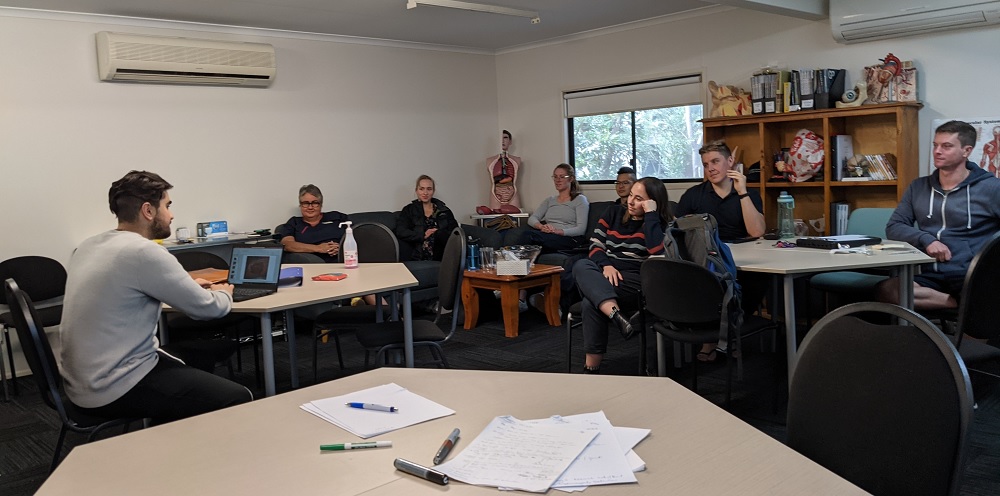Case Based Learning brings medical education to life

The room they meet in isn’t your typical teaching space. Like most teaching rooms it includes several tables with chairs and it has a white board and screen for presentations to project upon. However, there’s a cosiness to the room. At one corner there’s an opening to a small kitchen where tea can be made and lunch can be stored. At the other corner, there are two lounges and a coffee table.
A student is sitting with crossed legs on a couch reading something on her laptop. Slowly, the other students arrive. One heads to the kitchen to make a coffee, another settles into a seat at a table. As they enter they greet each other and the banter starts. Some of the students set to work as they wait for their teacher, Dr Isabella Hawke, to arrive.
This is a weekly routine for the eight Goulburn based year three rural stream medical students. They converge every Wednesday at the Australian National University (ANU) Rural Clinical School for their Case Based Learning (CBL) session.
“Being such a small group, we all know each other really well so everyone is very supportive, but we equally like to challenge each other to try new things. It has been nice to have a close group of peers to debrief with and learn from, and to spend time doing things together outside of medicine,” says Lorane Gaborit.
During the week the students attend clinical placements were they meet patients and provide clinical support under the guidance of doctors. Some of the students see patients within the Goulburn Base Hospital, which sits on the same grounds as the School. Others undertake their clinical work in the surrounding regional areas, such as Crookwell, under the guidance of general practitioners.
“I love CBLs,” declares William Zhou. “We learn about medical conditions through real-life cases that we’ve seen on our placements. The fact that it’s real life brings the learning experience alive. We’re currently learning about abdominal diseases so I’ll be presenting a case of acute pancreatitis that I saw in the Intensive Care Unit a few weeks back.”
It’s clear that the students enjoy the interactivity of the CBL sessions. Each student prepares a presentation that often includes images of the patient’s medical issue. They ask each other questions and discuss all aspects of the case. The students that weren’t involved in the patient’s care are asked to make a diagnosis. This approach helps the students develop a problem solving framework that is essential as a future clinician.
Halim Francis says “The most interesting case I have experienced was a set of twins that were born 15 weeks early. A mammoth effort was required from the paediatric and emergency teams at Goulburn Base Hospital as well as two neonatal emergency retrieval teams from Canberra and Westmead Children’s Hospital. It took all morning to stabilise, treat and transfer the babies. It’s rare for this type of emergency to take place at a rural hospital and extremely fortunate for a medical student, like me, to witness. I’m very grateful to have been involved.”
During their year in the rural stream, the students will spend time undertaking placements in several disciplines of medicine including paediatric, emergency, general, community and general practice, with Case Based Learning a major component of their education.
It’s a unique experience as outlined by Kelsey Walsh, "I appreciate how much Dr Hawke gets us involved in the broader community as part of the learning process so that we can better understand how rural healthcare works in the community. I feel that the teaching is more personal and involved than our urban colleagues and we are encouraged to engage in the community beyond medicine.”
